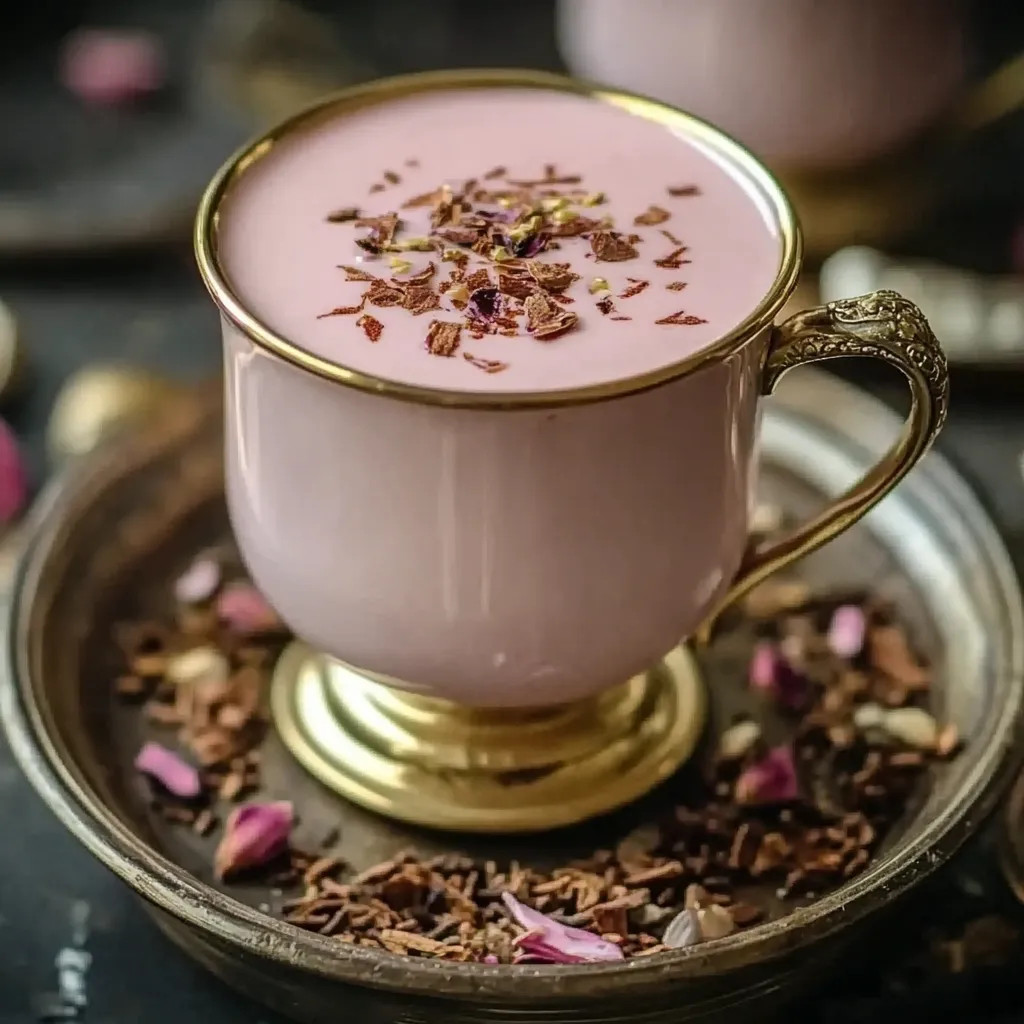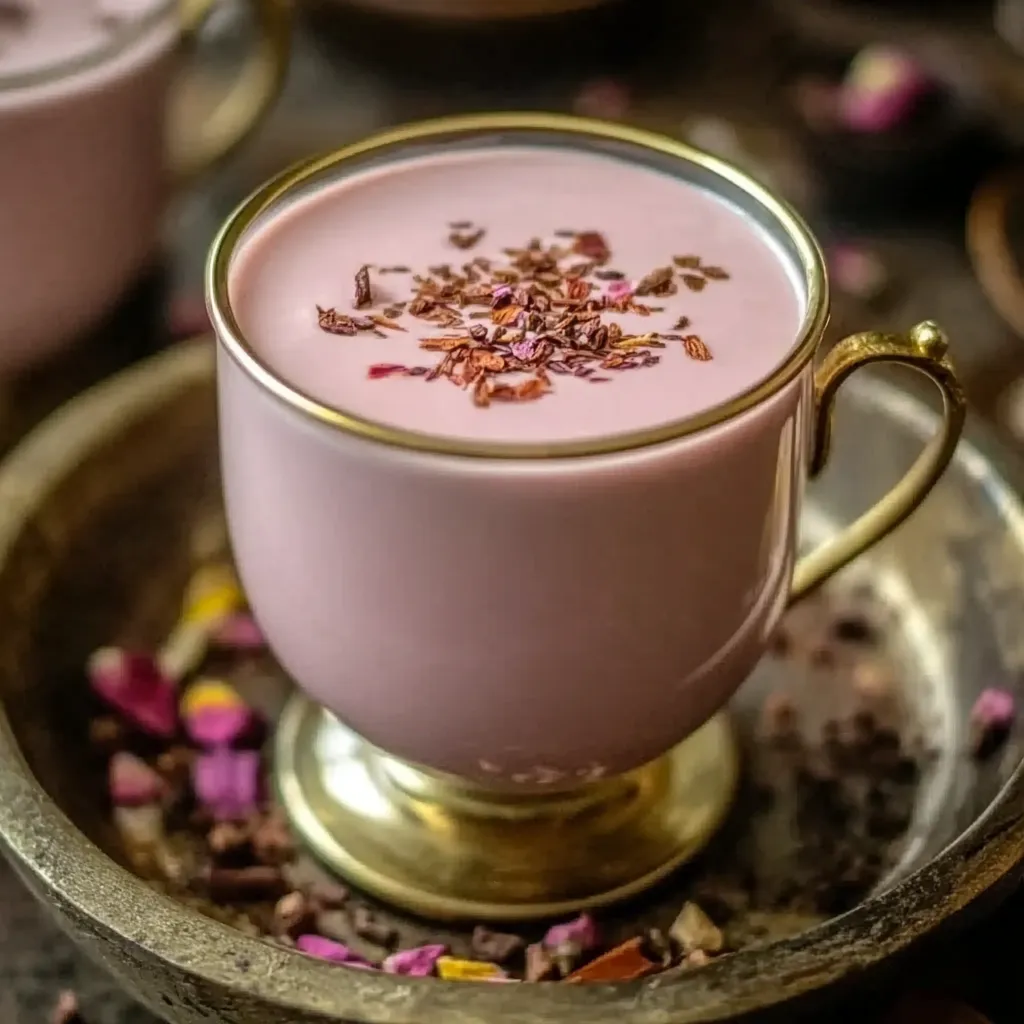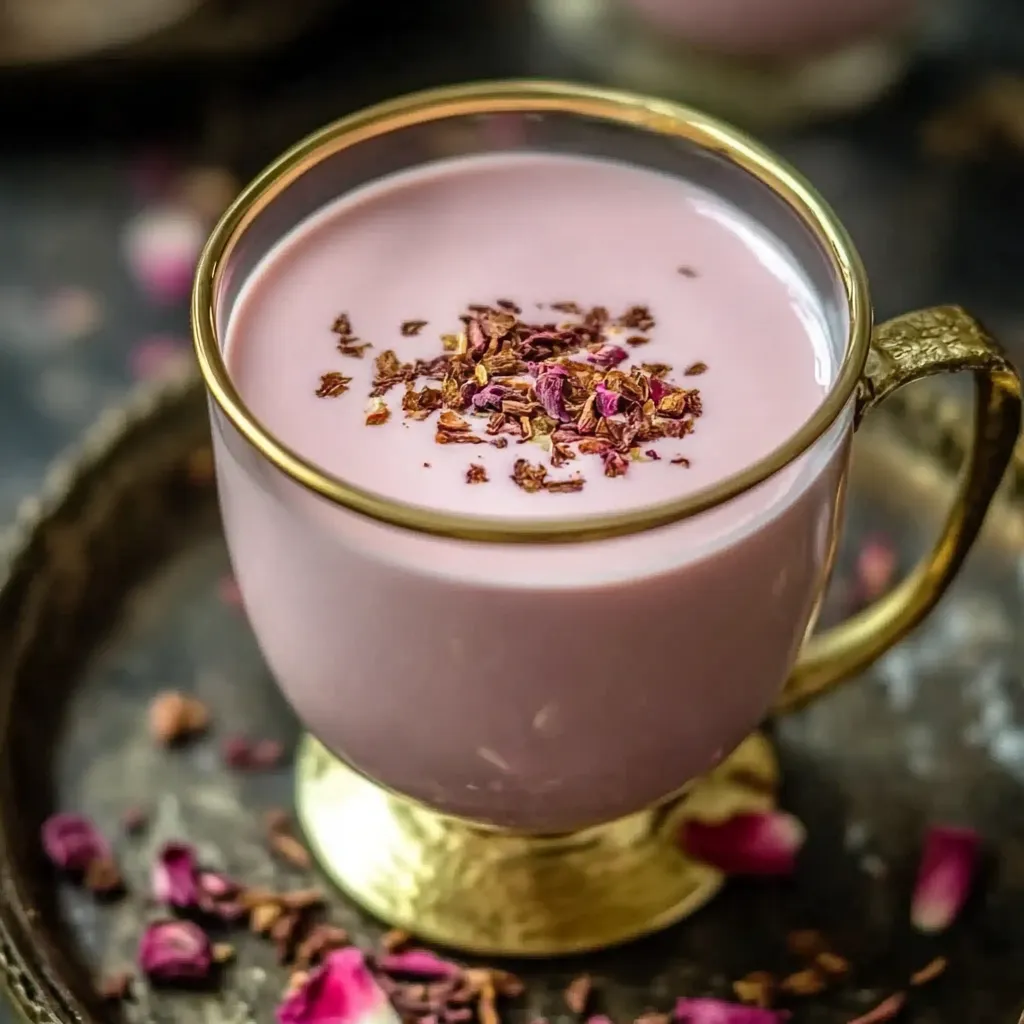 Pin it
Pin it
This aromatic Kashmiri Pink Chai transforms ordinary green tea into a luxurious, rose-colored beverage that warms both body and soul. The unusual chemistry between baking soda and green tea creates a stunning visual transformation that's as beautiful as it is delicious.
I discovered this recipe during a cold winter when I was craving something different from my usual coffee routine. The first time I watched the tea transform into that signature pink hue, I felt like an alchemist in my own kitchen.
Ingredients
- Water: Serves as the base for extracting all the flavor from the tea leaves
- Kashmiri or Himalayan green tea: Traditional, but any quality green tea works in a pinch
- Baking soda: The secret ingredient that creates the chemical reaction for the pink color
- Star anise: Adds a subtle licorice note that balances the creaminess
- Cardamom pods: Bring a sweet, floral aroma that's signature to South Asian teas
- Cinnamon stick: Infuses warmth and complexity without overpowering
- Salt: Enhances all flavors and creates depth
- Whole milk: Provides richness and helps develop the pink color
- Sugar or honey: Balances the astringency of the tea
Step-by-Step Instructions
- Brew the Base:
- Begin by bringing four cups of water to a rolling boil in a medium saucepan. Add two tablespoons of green tea leaves and continue boiling for a full five minutes. This initial steep extracts the tannins needed for the color transformation.
- Create the Chemistry:
- Add half a teaspoon of baking soda to the boiling tea and watch as the liquid transforms to a deep reddish color. This reaction between the tea compounds and alkaline baking soda is the foundation of the pink chai. Let it boil for another two minutes to fully develop.
- Infuse the Spices:
- Add one to two star anise pieces, two crushed cardamom pods, and one cinnamon stick to the tea. Allow everything to boil together for another minute, releasing the essential oils from the spices into the brew.
- Concentrate the Flavor:
- Reduce the heat to a gentle simmer and let the mixture reduce for 20 to 30 minutes until it reaches about half its original volume. This concentration intensifies both the flavor and the color. The longer you simmer, the stronger the tea will become.
- Season and Balance:
- Stir in a quarter teaspoon of salt, which might seem unusual for tea but is essential for balancing flavors and enhancing the natural sweetness of the spices.
- Add Richness:
- Pour in two cups of whole milk and increase the heat again. Bring the mixture back to a gentle boil while stirring constantly to prevent the milk from scalding. As it heats, you will notice the tea gradually transforming into its signature pink color.
- Strain and Sweeten:
- Once the chai has reached a beautiful pink hue, remove from heat and strain into cups or a serving pot to remove all the tea leaves and spice solids. Add sugar or honey to taste, starting with a tablespoon and adjusting to your preference.
- Garnish and Serve:
- For an authentic touch, top each serving with a sprinkle of crushed almonds or pistachios. Serve immediately while hot for the most comforting experience.
 Pin it
Pin it
The first time I served this to friends, they were skeptical about adding baking soda to tea. But after one sip, their doubts vanished. The cardamom is my favorite element as it brings back memories of my grandmother's kitchen and the comforting teas she would prepare during family gatherings.
The Science Behind the Pink
The magical color transformation in Kashmiri Pink Chai happens due to anthocyanins in the tea leaves reacting with the alkaline baking soda. These plant compounds change color based on pH levels, which is why the tea shifts from green to pink. The longer cooking time also breaks down chlorophyll in the tea, allowing the pink pigments to dominate. This reaction is similar to what happens when you add lemon juice to blueberries or cook red cabbage with different ingredients.
Cultural Significance
In Kashmir, this tea known locally as "Noon Chai" or "Gulabi Chai" is more than just a beverage. It's an integral part of Kashmiri hospitality and is traditionally served to guests as a sign of respect and welcome. During harsh Himalayan winters, families gather around samovars of pink chai, often paired with special bread called Tsot or Girda. The preparation is considered an art form passed down through generations, with each family having their own specific ratio of ingredients and brewing techniques.
Serving Suggestions
For an authentic Kashmiri experience, serve your pink chai with salted cookies or savory biscuits that complement the sweet-salty profile of the tea. In modern interpretations, it pairs wonderfully with buttery shortbread or cardamom cookies. For a special breakfast, offer the chai alongside toasted bread with a sprinkle of cinnamon sugar. The chai is traditionally served in small cups rather than large mugs, allowing guests to enjoy multiple servings that stay hot throughout the conversation.
 Pin it
Pin it
This is a drink that's as much about the experience as it is about the taste—perfect for making ordinary moments feel special.
Frequently Asked Questions
- → What gives Kashmiri Pink Chai its distinctive color?
The pink color comes from a chemical reaction between the green tea and baking soda during the brewing process. After adding milk and continuing to heat the mixture, the tea transforms into its signature pink hue.
- → Can I use regular green tea if I can't find Kashmiri green tea?
Yes, the recipe indicates you can use any green tea as a substitute for Kashmiri/Himalayan green tea, though the authentic version may have a slightly different flavor profile.
- → Why is baking soda used in this chai?
Baking soda is essential for creating the chemical reaction that eventually produces the distinctive pink color. It initially turns the tea water a deep red, which later transforms to pink when milk is added.
- → How long should I simmer the tea mixture?
The tea should be simmered for 20-30 minutes until it reduces to about half its original volume. This long simmering process intensifies both the flavor and color of the final drink.
- → What's the purpose of adding salt to the chai?
The small amount of salt enhances the complex flavors of the spices and tea. It's a traditional addition that balances the sweetness and creates depth in the final beverage.
- → Can I make Kashmiri Pink Chai without dairy milk?
While traditional Kashmiri Pink Chai uses whole milk for its rich texture and color reaction, you could experiment with full-fat plant-based alternatives, though the pink color development may vary.
